Last year was one of historic achievements in high definition, with Ofcom approving HD broadcasts on DTT, the terrestrial broadcasters promising HD channels on Freeview by 2012 and the BBC turning its HD trial service into the UK's first full- blown free-to-air HD television channel on satellite and cable.
If the pace of change was fast in 2007, then 2008 is set to be no different, with the launch of ITV and BBC-backed Freesat expected to bring HD broadcasts to a platform less constrained than Freeview in terms of broadcasting capacity.
The BBC will be hoping that Freesat takes off as quickly as Freeview did in areas outside DTT's range of coverage. Freeview reached a total of 14 million UK homes last year.
With media consultancy Screen Digest predicting 4.5 million Freesat homes by the end of 2008, the combined HD options of Freesat and Freeview will begin to provide stiffer competition for BSkyB, the satellite platform that has, so far, made all the running in HD.
Another key event for HD this spring will be the publication of Ofcom's Digital Dividend Review consultation, which will detail what it plans to do with spectrum freed up by switchover.
The regulator is keen on technological innovations such as MPEG-4 compression and DVB-T2 broadcasting, which will increase the capacity of DTT multiplexes so they can be reorganised for HD services without requiring extra capacity. Ofcom principal adviser, broadcasting Greg Bensberg, who is project director of the regulator's Digital Dividend Review, says: “There is a massive upside for the UK economy for these technologies to be adopted. Without them there is not enough capacity to launch HD.”
The upside for the government, of course, is that it will be able to auction off the freed-up spectrum rather than allocate it to broadcasters to expand their services with HD offerings. In fact, Ofcom remains to be convinced that HD is the best use of DTT capacity. “Our consultation questions whether HD is the best service,” declares Bensberg. “It's a fantastic innovation and will be of great interest to viewers over the coming years, but that doesn't mean we think it's automatically the answer. With regards to capacity, we are making sure we have a reasoned argument about what the right use for it is.”
Sky leads the pack
With the BBC not expecting to repurpose its DTT spectrum capacity for HD services until 2009, Sky is set to make most headway with its HD services this year. Since it launched its HD platform in 2006, the satellite broadcaster has clocked up well over 358,000 subscribers, with Screen Digest predicting 840,000 by the end of 2008 compared with 145,000 on Freesat.
Says BSkyB director of product management Stephen van Rooyen: “Sky has 14 dedicated linear channels which offer more than 5,000 hours of HD output each week. To put this in context, we offer more HD content than the combined standard definition output of all the five terrestrial channels. People join Sky for entertainment, sports, movies and factual programming, and it's these core genres that are forging ahead with HD.”
Hype aside, van Rooyen's got a point. Compared with the BBC, Sky is well ahead in terms of HD production. Take its sports output in October: 240 hours of HD programming - an average of seven and a half hours a day.
With Sky notching up HD subscribers at the rate of 20,000 per month, many regard it as HD's biggest success story to date in the UK. But they'd be wrong.
By end of 2008, Screen Digest forecasts that 11.3 million (40%) of homes will be equipped with HD-ready televisions compared with the current 6.5 million homes, making domestic HD-capable TVs the fastest growing part of the HD value chain. According to experts, the huge growth in sales of HD-ready TVs is driven by aesthetics rather the lure of HD channels and content. Simon Bryant, business director of consultancy Understanding & Solutions, says: “These screens integrate seamlessly into modern living spaces, they look fantastic and the slimline design allows consumers to own larger TVs than was previously possible.
“The fact that these panels are HD-ready is of secondary importance to the bulk of purchasers, particularly with confusing and conflicting messages being communicated about the availability of HD services on the high street.”
HD programming
Down at the coal face of HD production and post-production, 2008 is widely expected to be a big year, with more and more producers and post houses remodelling their businesses to be as HD-ready as their domestic televisions.
Stephen Marsh, executive producer at factual indie Pioneer Productions, reveals that because the indie works on so many international co-pros with US broadcasters such as National Geographic, Discovery and History Channel, its entire output is now HD.
As the novelty of HD production wears off, prices on the hire front are coming down, he adds. “You used to pay through the nose for HD cameras, but now the price difference is mainly in post-production, where you need the right online kit, HD recorders, plenty of memory and higher spec editing systems that can cope with HD. If you don't, HD will catch you out.”
In post, everything from storage space to monitors to VTR machines and grading costs more - up to 20% to 30% more, according to Pepper Post operations managing director Shane Warden.
It's the time and cost of HD posting that has prevented BBC1's Doctor Who from going HD, despite the clear international sales benefit it would give what is one of the BBC's biggest programme brands.
According to BBC Wales drama producer Richard Stokes: “The number of special effects involved would have doubled the post-production period and the costs meaning a show that was wanted by Easter would have taken until the summer to finish. SD was chosen simply because special effects don't need to be the same quality.”
However, Stokes is an HD convert, using the HDCAM format on the first and second series of the Doctor Who spin-off Torchwood. “Unless the budget makes it unworkable, high definition gives you so many more options in the grade, and looks so much better. Everything that you might want to sell on DVD or repeat on a different channel now needs that high-quality option.”
Perhaps one of the most surprising HD coups of recent months has been the shooting of BBC costume dramas, better known for being shot on film, on HD. BBC adaptations of Lark Rise to Candleford and last year's ratings success Cranford have both taken the plunge.
Says BBC head of drama series and serials Kate Harwood: “They were very different shows - Cranford was a high-end, big jewel serial, whereas Lark Rise to Candleford is more of a returnable series, but it's interesting that aesthetically, HD has narrowed the gap between them.”
While many drama producers feared that HD would make shortcomings in costumes and set design all too evident, if the BBC did have a problem, it was in the make-up department on Cranford, admits Harwood. “Modern make-up, which on film blends into the flesh and looks natural, can appear more obvious on HD. It lifts the make-up off the face. When you peer at the monitor you see powder on the skin and lipstick on the face.”
The solution is in how you light the production. Balazs Bolygo, director of photography on Lark Rise to Candleford, recalls: “There were issues with close-ups on people's faces, but the answer was to light the set with HD in mind. It's a classic craft issue and you've just got to get to know the pitfalls of the different HD formats.”
Producers admit if there is a downside to HD it's the extra time it takes. And time, of course, equals money. Sets have to be more carefully lit, make-up has to be regularly checked, as do costumes. In the camera department, technical settings such as back focus also require constant attention, all of which adds up to HD slowing down shooting rates.

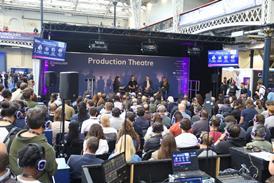




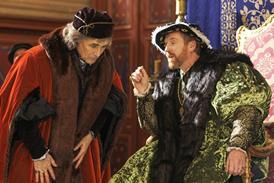
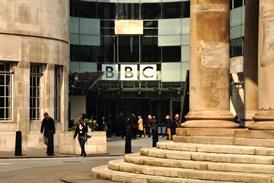





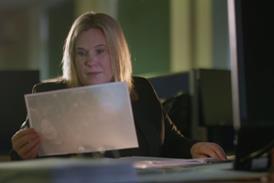
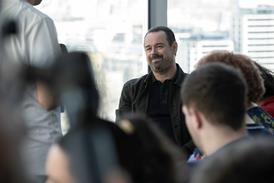













No comments yet